Discover the Best of Malta in Winter: A Guide
Last Updated: Jan 16, 2024
Reading Time: 14 minutes
By: Shaun
Malta is a destination for all four seasons, and while the majority of the people that visit the islands do so during the warm summer months, many decide to visit during the winter season.
In this article, we will explain why you should visit Malta during this time of the year and what the best things to do in Malta are in the winter.
Why should you visit Malta in winter?
1. Mild temperatures
Malta’s coldest months during the year are January and February, when the temperature hovers around 7–15 °C.
While the high humidity and strong winds can make it feel cooler, the temperature is still substantially higher than what you would expect in many parts of Europe at this time of year.
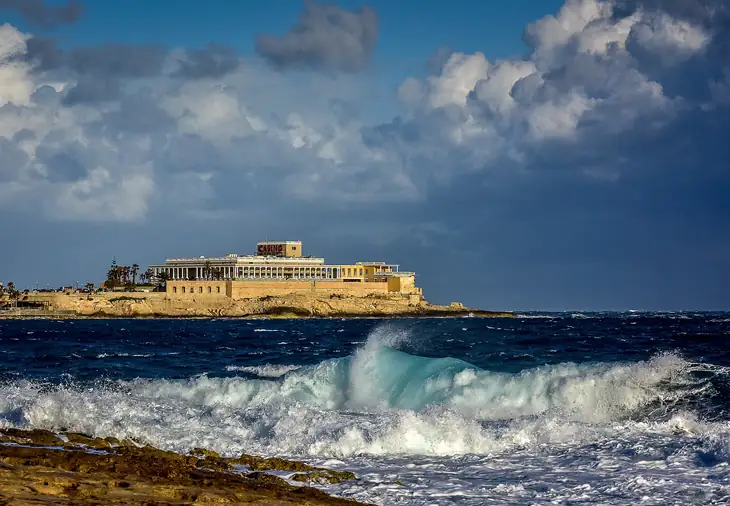
Winter in Malta | Image by Bellina 09 on Wikimedia Commons
2. Sunny days
Malta prides itself on having 300 days of sunshine every year, so it’s very common to have a sunny day during the winter seasons. Storms in Malta can get very intense at times, but they usually do not last more than a few days, with many ending after just a few hours.
3. Its cheaper
The cold winter months are considered the low season by the Maltese tourist industry. During this period of the year, many hotels and airlines cut their prices or provide attractive incentives to attract visitors.
4. Avoiding the crowds
Most, if not all, historical attractions are open all year round, so you can avoid the long lines that are typical during the busy summer months by visiting during the winter.
This gives you a better opportunity to take in the attractions available around at your own leisure.
What to do in Malta during the winter months?
1. Visit Valletta

Valletta Ariel View | Image by Public Domain Pictures from Pexels
Malta has numerous historical sites and there is no better place to start unpacking the island’s rich history than its capital, Valletta. Valletta is a UNESCO World Heritage Site and during the winter months, you get to visit this city without the crowds that flock to it during the summer months.
In Valletta, you can visit St. John’s Co-Cathedral, which features intricate Baroque architecture and stunning artwork by Caravaggio. Other attractions in Valletta include the Upper Barrakka Gardens, which offer panoramic views of the Grand Harbour and the National Museum of Archaeology, which houses a vast collection of artefacts dating back to prehistoric times.
2. Go Trekking
Malta and Gozo have some stunning countryside and a winter trek is the perfect way to explore it. Here are some options.
Victoria Lines
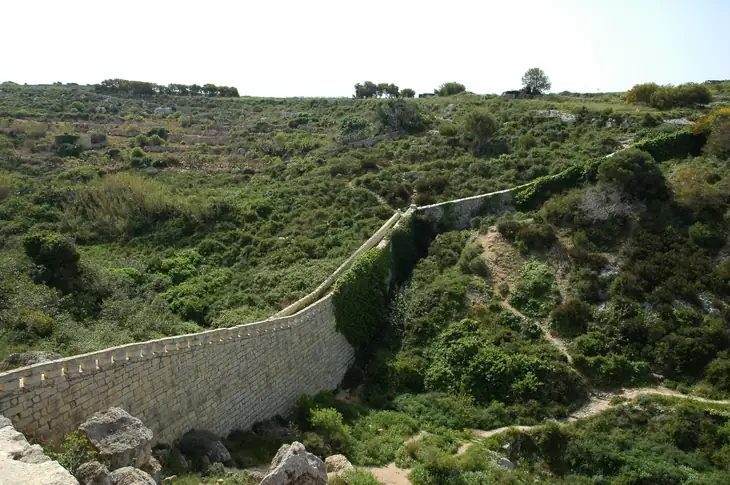
Victoria Lines right on the boundry between Mġarr and Rabat | Image by Rolf Krahl on Wikimedia Commons
The Victoria Lines were built in the late 19th century by the British and are a series of fortifications built on top of a natural fault line that crosses Malta from Madliena to Fomm ir-Riħ.
To trek along the Victoria Lines, it’s best to get to the area known as the “il-Kuncizzjoni” limits of Rabat and walk all the way to Mosta. The hike is roughly 10 miles long and is best suited for experienced trekkers because certain sections require steep climbs and descents, while others have been overrun with vegetation you need to somehow get over or bypass.
Marsalforn to Wied il-Għasri

Wied il-Għasri | Image by Benjamin Gamblin on Flickr
Another great walk along the coast of Gozo is the road from Marsalforn, leading all the way to Wied il-Ghasri. Marsalforn is one of Gozo’s most popular seaside towns, and one can start walking west from Marsalforn beach along the coast to first get to Qbajjar, then take a detour to il-Qolla il-Bajda before continuing to Xwejni Bay.
Continuing further west, you pass by Reqqa Point and Għar ir-Riħ, two popular diving spots in Gozo, until you arrive at the surreal cove of Wied il-Għasri.
This walk is around 4 kilometres long and is mostly along a dirt road, so it should not be too difficult for anyone to do.
Selmun

St Paul's Islands | Image by Amante Darmanin on Flickr
Our last pick takes us to the north of Malta, just outside the northernmost town of Mellieħa. Starting at Selmun Palace, you proceed beyond the palace to Għajn Ħadid Tower. At the end of the road, one has to proceed off the road to get all the way to the tower, but it’s well worth it because you get a fantastic view over Imġiebaħ Bay.
After that, you need to walk back and take a different road to get to Fort Campbell, which was used as a battery station during World War II. You can then walk all the way down to the coast to il-Blata il-Bajda (meaning white rock in Maltese, where you can catch some amazing views of St. Paul’s Islands. Then you proceed south to Mistra Battery and, eventually, Mistra Beach. Finally, from Mistra Bay, you can return to your starting point at Selmun Palace.
The loop is approximately 5.5 kilometres long, with some sections requiring you to walk on an uneven surface. The last kilometre from Mistra Bay to Selmun Palace is primarily uphill, but the trail provides a fantastic chance to see St. Paul’s islands and surrounding countryside.
3. Visit the Megalithic Temples and the Hal Saflieni Hypogeum
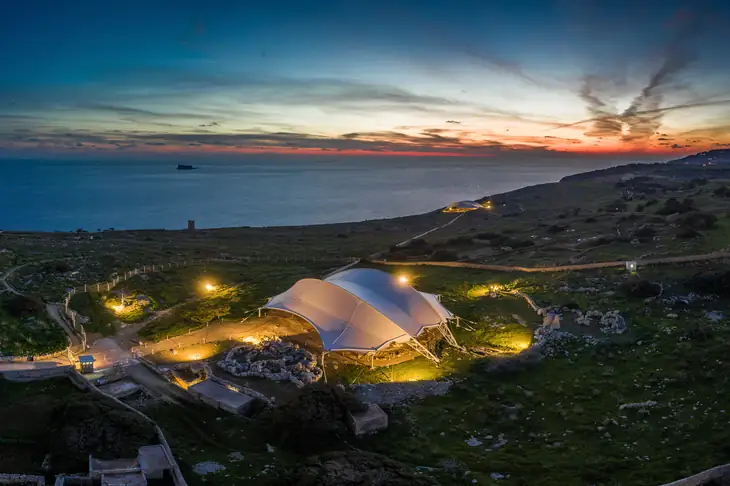
Ħaġar Qim and Mnajdra | Image by FritzPhotography on Wikimedia Commons
Another two entries in the UNESCO World Heritage Site list are the seven Megalithic Temples and the Hal Saflieni Hypogeum.
Five of the Megalithic temples are located on the main island of Malta, and the most popular are Ħaġar Qim, Mnajdra, and the Tarxien Temples, while another two are the Ġgantija Temples in Gozo.
The Hypogeum is an underground temple and burial site dating back to 4000 BC and is believed to have been a place of great importance for the ancient Maltese people. This unique monument was included in the UNESCO World Heritage List in 1981 as a remnant of a civilization that has since become extinct.
4. Go Diving
Due to Malta’s mild climate, diving is possible all year, but the best months for diving are November to April. During this time, the water temperature ranges from 14°C to 18°C, which is comfortable for most divers. In addition, the winter months are less busy, which means that you will have more space and time to explore the underwater world without the crowds.
The Maltese islands have a long list of diving sites ranging from caves to wrecks to reefs. Some of the most popular sites include:
Diving in Malta is feasible all year because of its moderate climate, although the ideal months for diving are November to April. During these months, the sea temperature ranges from 14°C to 18°C, which is ideal for most divers. Also, as the winter months are less popular with tourists, the sites will be less crowded, giving you more room and time to explore the underwater world.
The Maltese islands are home to a long list of diving sites, with some of the most popular sites include:
Blue Hole
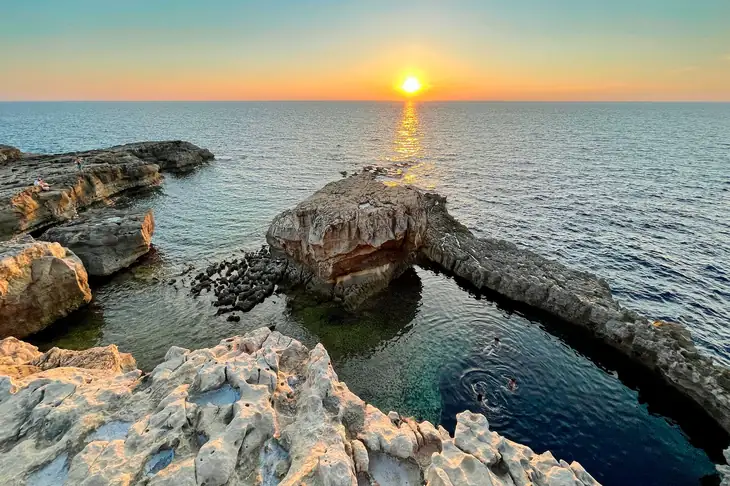
The Blue Hole | Image by Bex Walton on Flickr
The Blue Hole is located in an area known as Dwejra on the island of Gozo. It is one of the most popular diving sites and consist of a 15-meter-deep sinkhole that provides a unique and challenging diving experience.
The Um El Faroud
This is a popular wreck dive located off Wied iz-Zurrieq, features a tanker that was scuttled in 1998 after it was involved in an accident a few years prior. The ship split in two after a storm in the mid-2000s, but it is still considered one of the best dives for sport divers.
Cirkewwa
The area of Cirkewwa is very popular with beginners and experienced divers due to the assortment of attractions it provides. This area has something for everyone and is ideal for both technical and recreational diving. At Cirkewwa, you can also find several anchors, two natural arches, a statue of the Virgin Mary, and numerous tunnels and caverns.
Santa Maria Caves
The Santa Maria Caves are a complex of roughly ten caves on the north side of Comino, each with their own distinct charm. Some of these caves have amazing swim troughs, others have large underwater passageways, and others have stunning vistas of the surrounding sea near their openings.
The caves, some of which are visible above sea level, are a popular diving destination in the summer months, so it is definitely a great location when the sea is calm during the winter months.
5. Unwind in Gozo

Citadel | Image by FritzPhotography on Wikimedia Commons
If you are looking to escape your busy life for a few days, then there is no better place Gozo. During the winter months, Gozo really goes back in time and is nothing less than a peaceful oasis.
This setting gives the perfect opportunity to visit the historical sites without the crowds, do some diving, do the treks we listed above, or get the serenity and inspiration to write that book you’ve wanted to write for the longest of times.
If you decide to stay in Gozo, do keep an eye on the weather since the only connection Gozo has with Malta is with a ferry, and it’s common that the ferry temporarily stops service until the storm passes or the strong winds subside. Make sure you are ready to change your plans at short notice so you don’t get stranded on the island and miss your return flight.
6. Watch a performance at the Manoel Theatre
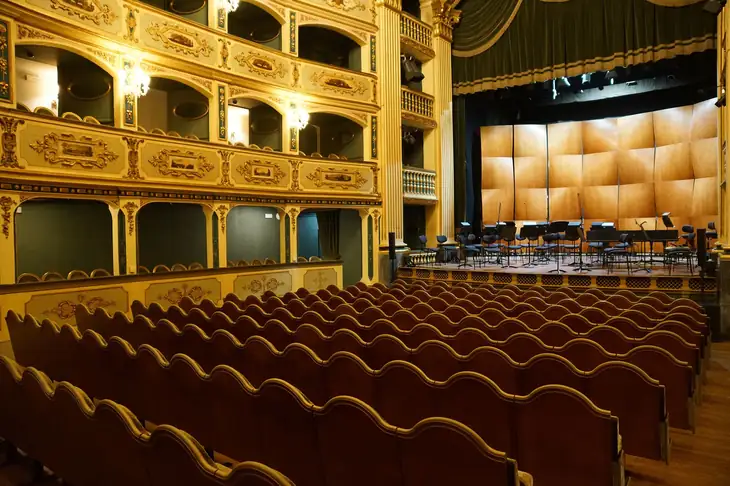
Manoel Theatre | Image by Otter on Wikimedia Commons
Located in the heart of Valletta, one of the most remarkable cultural institutions in Malta is the Manoel Theatre.
The theatre was established in 1721 by António Manoel de Vilhena, the Portuguese Grand Master, from whom it derives its name. It rapidly became a cultural hub in Malta after its construction, and many great performers and artists have graced the stage of the Manoel Theatre throughout the years, including the Italian composer Gioachino Rossini, the French writer Victor Hugo, and the legendary opera soprano Maria Callas.
The Manoel Theatre is home to the Malta Philharmonic Orchestra, which performs a regular concert season from October to June. The theatre also holds a range of other events, such as plays, musicals, ballets, operas, and concerts spanning other genres apart from classical music.
One can also take a guided tour for those who would like to know more about the architecture and history of this baroque gem in the heart of Valletta. There is truly something for everyone at the Manoel Theatre.
What to do in December in Malta?
1. Watch a Pantomine
A Christmas pantomime is a type of theatre that originated in the United Kingdom and is performed during the holiday season. It is a combination of comedy, music, dance, and drama, often featuring well-known fairy tales such as Cinderella, Snow White, and Aladdin. Pantomimes are known for their colourful costumes, over-the-top characters, and audience participation.
A number of local production companies, like the Masquerade Theatre Company, FM Theatre Productions, and the Malta Amateur Dramatic Club (MADC), organise a pantomime during this time of the year. So if you are interested in some heartwarming holiday fun, make sure to book your tickets in advance to avoid disappointment.
2. Be part of Valletta’s New Year’s Eve Celebrations

New Year Fireworks | Image by A.C. Amigos Diplomáticos on Flickr
If you are visiting Malta over the New Year period, you can join the New Year’s Eve celebrations that happen in Valletta.
Every year, the celebrations consist of stunning fireworks to welcome the new year, as well as live performances by a variety of local and international bands and singers. The festivities are free and accessible to everyone.
What to do in January in Malta?
1. Catch a performance at the Valletta Baroque Festival
Held annually during the month of January is the Valletta Baroque Festival, which honours the wide genre of classical music. The festival features some of the best soloists and ensembles in the baroque music scene, performing in settings like the Manoel Theatre, St. John’s Co-Cathedral, the Verdala Palace, the Palazzo Parisio in Naxxar, and other churches and places, some of which date back to the 16th century.
The festival was first held in 2013, and since then, it has grown to become one of the largest music festivals in Malta, attracting both local and international audiences.
The 2024 edition will be held between the 11th and 28th of January, and the full programme and tickets are available at the Festivals Malta website. Some highlights include:
- A Scared music concert entitled Salve Regina, which will be held on January 16. It will feature the Abchordis Ensemble with Claire Debono at St. Catherine Parish Church in Żurrieq.
- Goldberg Variations on Wind Instruments, which will feature the wind section of the Malta Philharmonic Orchestra. The event will be held at the Casino Maltese, Valletta, on January 17
- The Bach Keyboard Concerts were performed as well by the Malta Philharmonic Orchestra under the direction of Michael Laus. This performance will be held at the Manoel Theatre on January 18, 19, and 20.
- Recorder virtuoso Erik Bosgraaf will perform at the Maritime Museum in Vittorios in a performance titled Picking Flowers. The concert will be held on January 19.
2. Visit the Gladiator movie set
On January 21, between 8 a.m. and 5 p.m., the Malta Film Commission is hosting an open day at the Malta Film Studios and Fort Ricasoli, where Ridley Scott is filming scenes for Gladiator 2. This same fort was also the location for many scenes in the original Galdiator movie, which was released in 2000.
On the film location grounds, one can find the recreation of the Colosseum built for the film, amongst other attractions available to visitors. Entrance will be free.
3. Visit A Citrus Festival
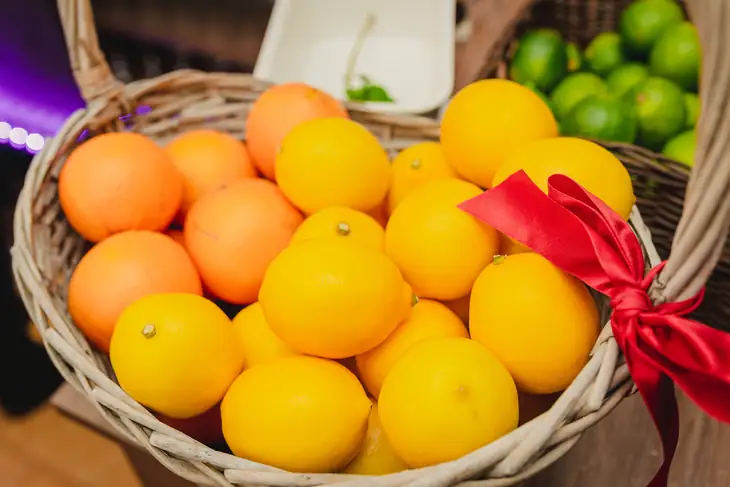
Citrus Fruit | Image by Marco Verch Professional Photographer on Flickr
Lija Local Council will be organising the annual festival dedicated to citrus fruit at its main square on January 21 from 9 a.m. to 4 p.m.
At this festival, one can find various other stalls that sell products yielded from these fruits, some of which are prepared by some renowned local chefs.
A similar citrus festival will be held on the same day between 9 a.m. and 1 p.m. at the gardens of the Franciscan Capuchin convent in Kalkara. This convent is close by the Gladiator film set, which will be open on that day, and the local council will provide transport to and from the convent and Fort Ricasoli.
What to do in February in Malta?
1. Celebrate The Carnival
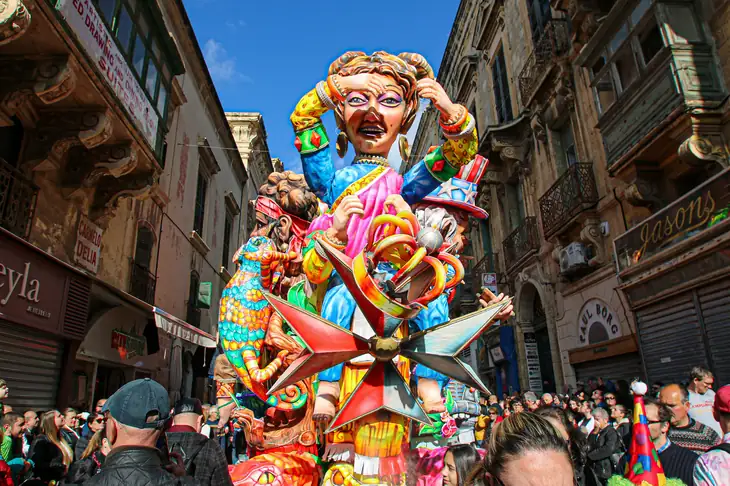
Carnival Float | Image by Roo Pitt on Flickr
Carnival in Malta is celebrated in February and dates back to the 16th century, when the Knights of St. John, who ruled over Malta at the time, introduced it to the country. The carnival back then was celebrated only in the streets of Valletta as a celebration for the noble classes, but it was later adopted by the larger Maltese population, who contributed their own unique traditions and customs to the holiday.
Carnival in Malta has evolved into an important cultural festival that draws people together to celebrate their common heritage.
The festivities last from Friday through Tuesday, right before the beginning of Christian Lent on Wednesday. Many events will take place throughout these days, including a procession of floats and a celebration dedicated to the children.
Gozo too hosts its own celebrations, with the highlight for many being the spontaneous carnival that happens in Nadur. Many people flock to this small town and bring it to life with their costumes, ranging in multiple themes from satire to horror to just the outright grotesque.
2. Feast of Saint Paul’s Shipwreck
The Maltese folklore and traditions are deeply rooted in Christianity, as Malta has been a Christian country since St. Paul shipwrecked on the islands in the year 70 AD. This event is celebrated every year on the 10th of February, with the peak of festivities happening in Valletta.
Each parish in Malta and Gozo has a patron saint, and during the summer months, festivities are organised to honour the saint. While many parishes choose to do so during the summer months for the guarantee of good weather, St. Paul’s Shipwreck Parish in Valletta celebrates its patron saint on the 10th of February.
This gives the perfect opportunity for those visiting Malta during February to experience this piece of Maltese tradition.
Conclusion
While Malta may be known for its sunny beaches and summer tourism, the winter months offer a unique and exciting opportunity to explore the island’s history, culture, and natural wonders. From the historical landmarks of Valletta and the Megalithic Temples to the natural beauty of the Dingli Cliffs and the Blue Hole, Malta has something to offer for every traveller.
Whether you prefer exploring ancient sites, diving, or simply relaxing in the countryside, Malta is a destination that should not be missed, even during the winter. So why not consider visiting Malta in the winter and discovering all that this beautiful island nation has to offer?
Frequently Asked Questions
Is the Manoel Theatre wheelchair accessible?
Yes, the theatre is wheelchair accessible, and there are designated spaces for wheelchair users.
When is the best time to visit Gozo in the winter?
Any week during the winter is a good time to visit Gozo, but it is best to avoid the days around the 10th of February and Carnival weekend, as many locals flock to Gozo for a weekend break.
What should I wear in Malta in the winter?
If you are visiting Malta during the winter, it is best to pack layers so that you can shed them if you happen to have some nice winter days during your stay. The temperature in winter is around 7–15 °C, though the high humidity and gale-force winds can make it feel like it is much colder.
Where should I stay in Malta in the winter?
The Maltese islands are relatively small, so any place is good for your stay. If you are staying on Gozo, keep an eye on the weather to make sure you do not get stranded if the ferry suspends its service.







